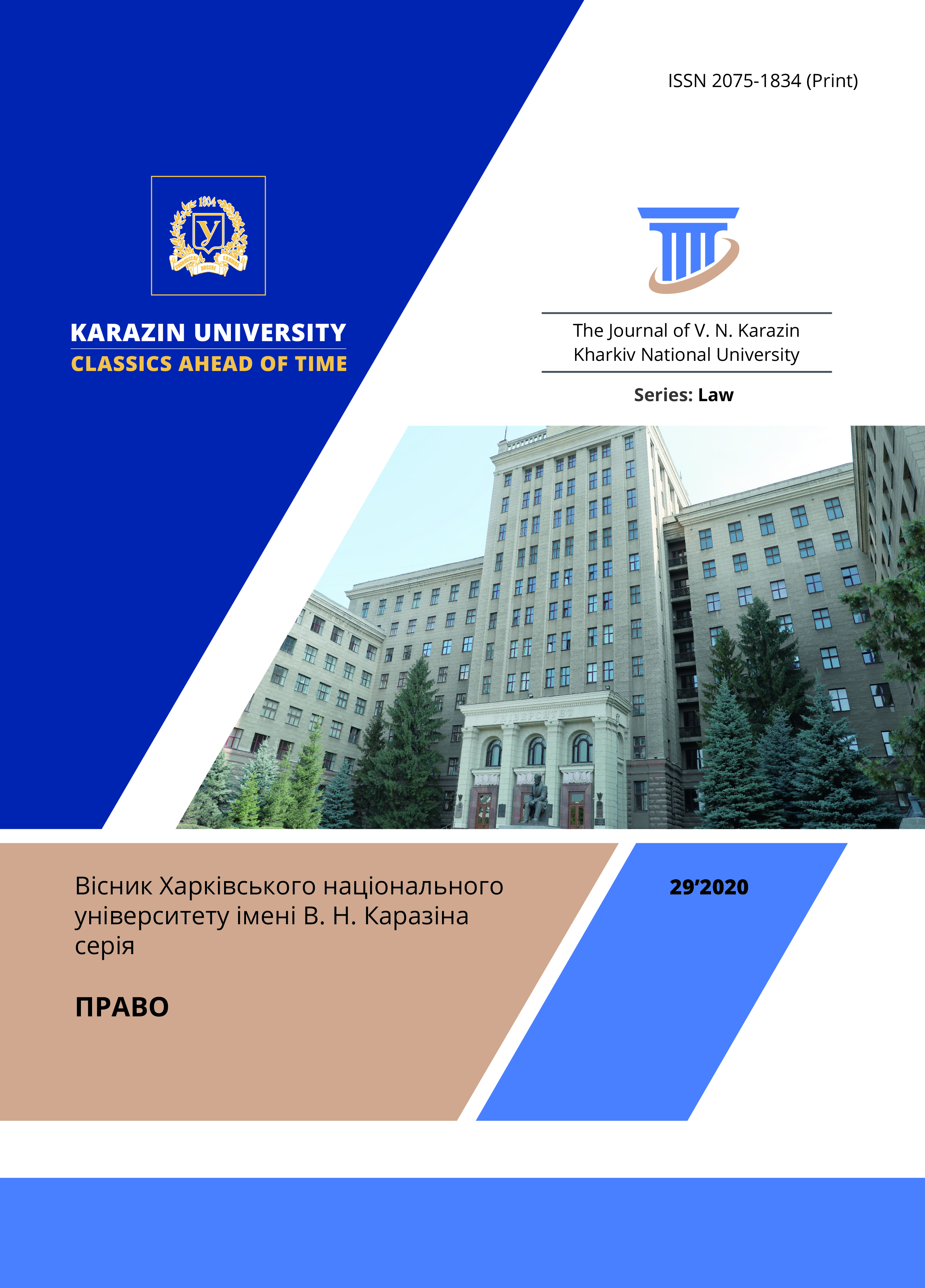ОСНОВОПОЛОЖНІ ПРИНЦИПИ ІНСТИТУТУ ГРОМАДЯНСТВА: JUS SOLI та JUS SANGUINIS
Анотація
Досліджено міжнародно-правові принципи громадянства в національних системах права різних країн. Розглянуто зміст відповідних принципів інституту громадянства та їх значення в умовах глобалізації. Проаналізовано положення конституційного права зарубіжних країн, а також чинного законодавства України. Акцентовано увагу на існуючих міжнародно-правових принципах інституту громадянства, їх вплив на вітчизняну правову систему; отримали подальший розвиток пропозиції щодо адаптації законодавства України відповідно до вимог Європейського Союзу.
Ключові слова: jus soli; jus sanguinis; міжнародно-правові принципи, інститут громадянства; принципи права; принципи інституту громадянства; громадянство України; право на громадянство.
Макаров М. В., аспирант кафедры конституционного права Украины, Национальный юридический университет имени Ярослава Мудрого, г. Харьков, Украина, makarov_m_v@vladi.com.ua
ORCID 0000-0001-9524-9092
Завантаження
Посилання
1. Baylis, J., Smith, S., 2001. The Globalization of World Politics An introduction to international relations. Panoeconomicus, Oxford University Publishing House, 105-108 p.
2. Yankovskiy S. A. Miznarodno-pravovi aspecti institutu gramadyanstva u konteksti evropeyskoi pravovoi tradizii. Форум права. 2011. №3. С. 909. URL :
3. Brubaker, R., 1992. Citizenship and nationality in France and Germany. (EUA): Harvard Publishing House. (43 p.)
4. Langbeinit, John X .; Lerner, Renee Lettow; Smith, Bruce P. (2009). The history of common law: the development of Anglo-American legal institutions. New York: Aspen Publishing House. (71-72 p.)
5. Lammy, Glenn J .; Chang, James (December 17, 2004) "The Michigan High Court ruling offers positive guidance on challenges to law enforcement reform." Legal basis. Washington Law Foundation. (19 p.-46 p.).
6. Joppke, Christian, Immigration and Nationality; United States, Germany and Great Britain, Oxford, Oxford University Press, 1999, p.101
7. Milestones! 200 Years of American Law: Milestones in Our Legal History. By Jethro Koller Lieberman. Published by West, 1976. Original from the University of California. Digitized Jun 11, 2008. (148 p.)
8. Wink, M.; de Groot, G.R. (2010). Birth citizenship: trends and rules in Europe. RSCAS / EUDO-CIT-Comp Comparative Report. 2010/8. Florence: EUDO Citizenship Observatory. (30 p.)
9. Lung-chu Chen, Introduction to Contemporary International Law: A Politically Oriented Perspective (Oxford University Press, 2015), p. 223
10. Ivan Shearer and Brian Opeskin, "Nationality and statelessness" Fundamentals of International Migration Law (eds. Brian Opeskin, Richard Perruchud and Gillinne Redpat Cross: Publisher of the University of Cambridge, 2012), p. 99
11. Kostakopulu, Dora (2008). The Future of Citizenship Management. Cambridge University Publishing House. 26-27 p.
12. Vink, Maarten P., de Groot, Gerard-Renee (November 2010). Citizenship by Birth: Trends and Rules in Europe. Florence: European University Institute. Paragraph 35.
13. Case of Mennesson v. France and Labassi v. France: Surrogate motherhood across the border, 26 June 2014.
14. Bauböck R, de Groot D, Ersbøll E (2015) Bloodlines and accessory: time to give up ius sanguinis? GLOBALCIT, 02/09/2018. (301p.)
15. Al Pellegrino Cattolica: Vatican Gardens. 2008 Al Pellegrino Cattolico srl Via di Porta Angelica (S.Pietro) I- 00193 Roma, Italy. (81-83p)
16. Lateran Pacts of 1929 [Електронний ресурс]. – 1929. – Режим доступу до ресурсу: http://www.aloha.net/~mikesch/treaty.htm.
17. Буткевич О. В. Право крові. Українська дипломатична енциклопедія: у 2-х т. /редкол.:Л. В. Губерський (голова) та ін. Київ : Знання України, 2004. Т. 2 .812 c.
18. Gerard-Rene de Groot, Citizenship Law, in the ELGARIAN ENCYCLOPEDIA OF COMPARATIVE LAW 476-492,479 (Jan Smiths ed., 2006).(189c.)
19. Pro hromadianstvo Ukrainy : Zakon Ukrainy vid 18 sich. 2001 r. № 2235-III. Vidom. Verkhov. Rady Ukrainy. 2001. № 13. St. 65.
Авторське право (c) 2020 Макаров М. В.

Цю роботу ліцензовано за Міжнародня ліцензія Creative Commons Attribution 4.0.





